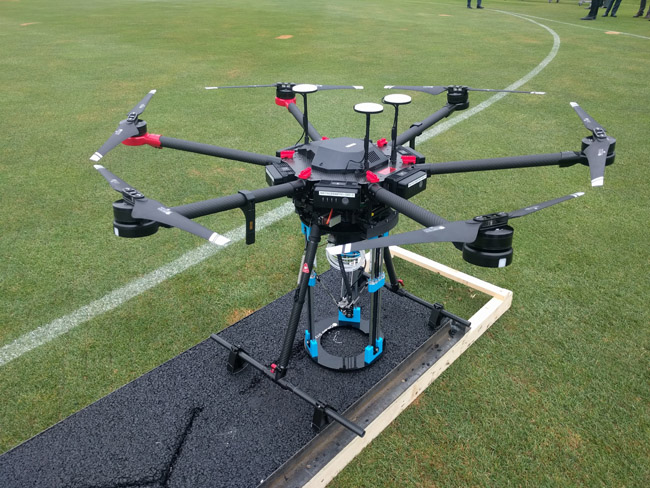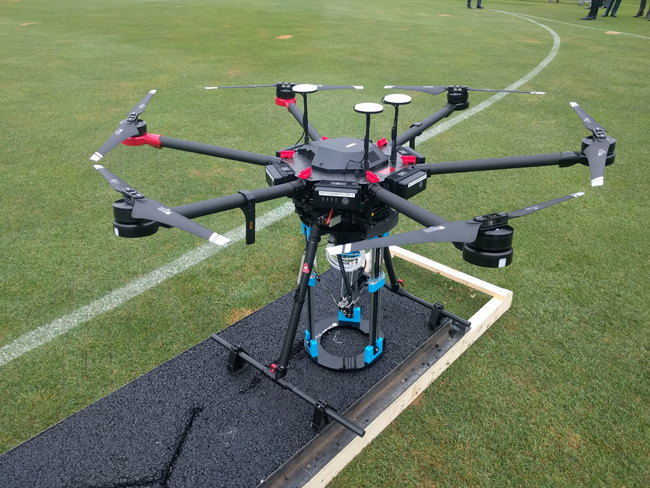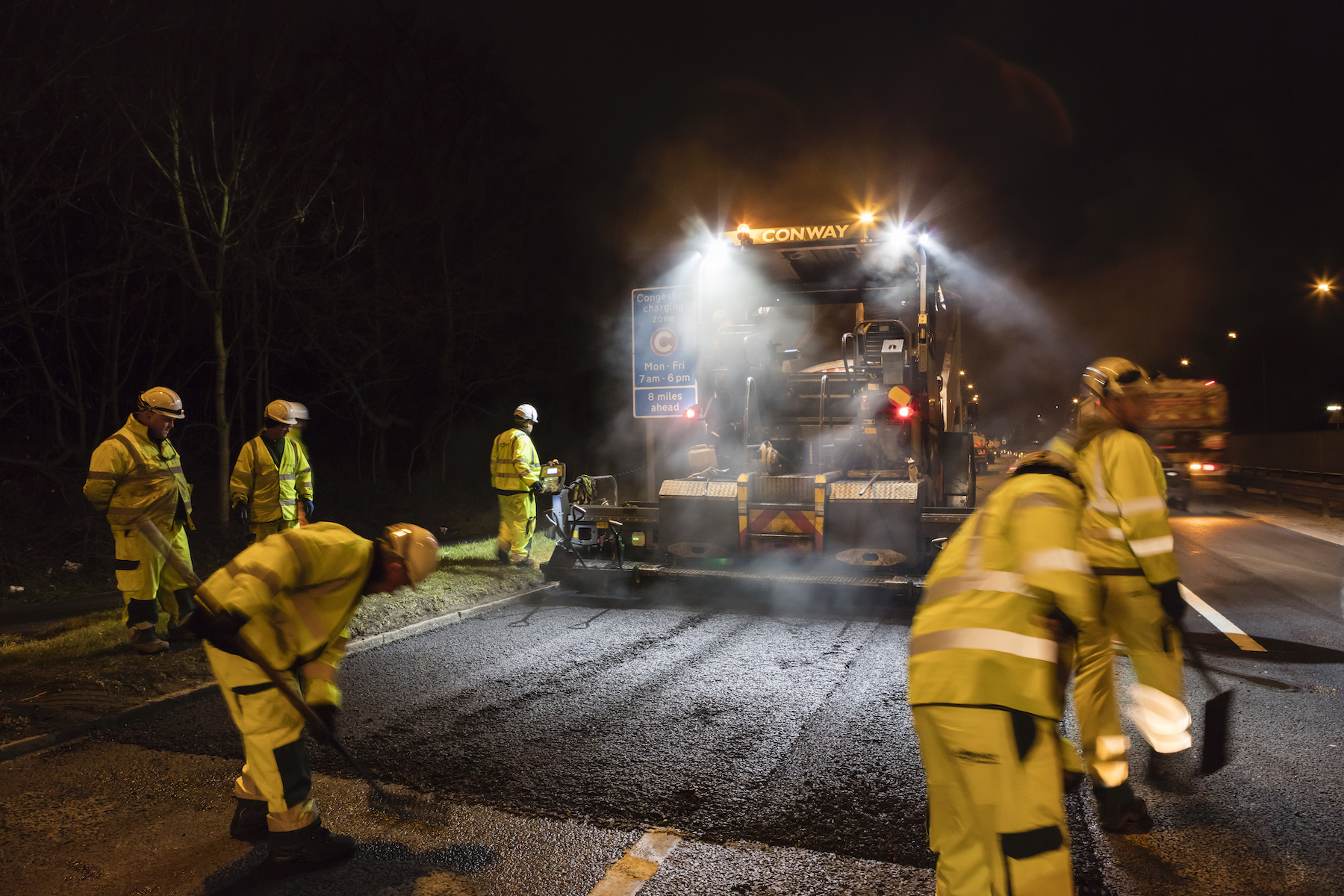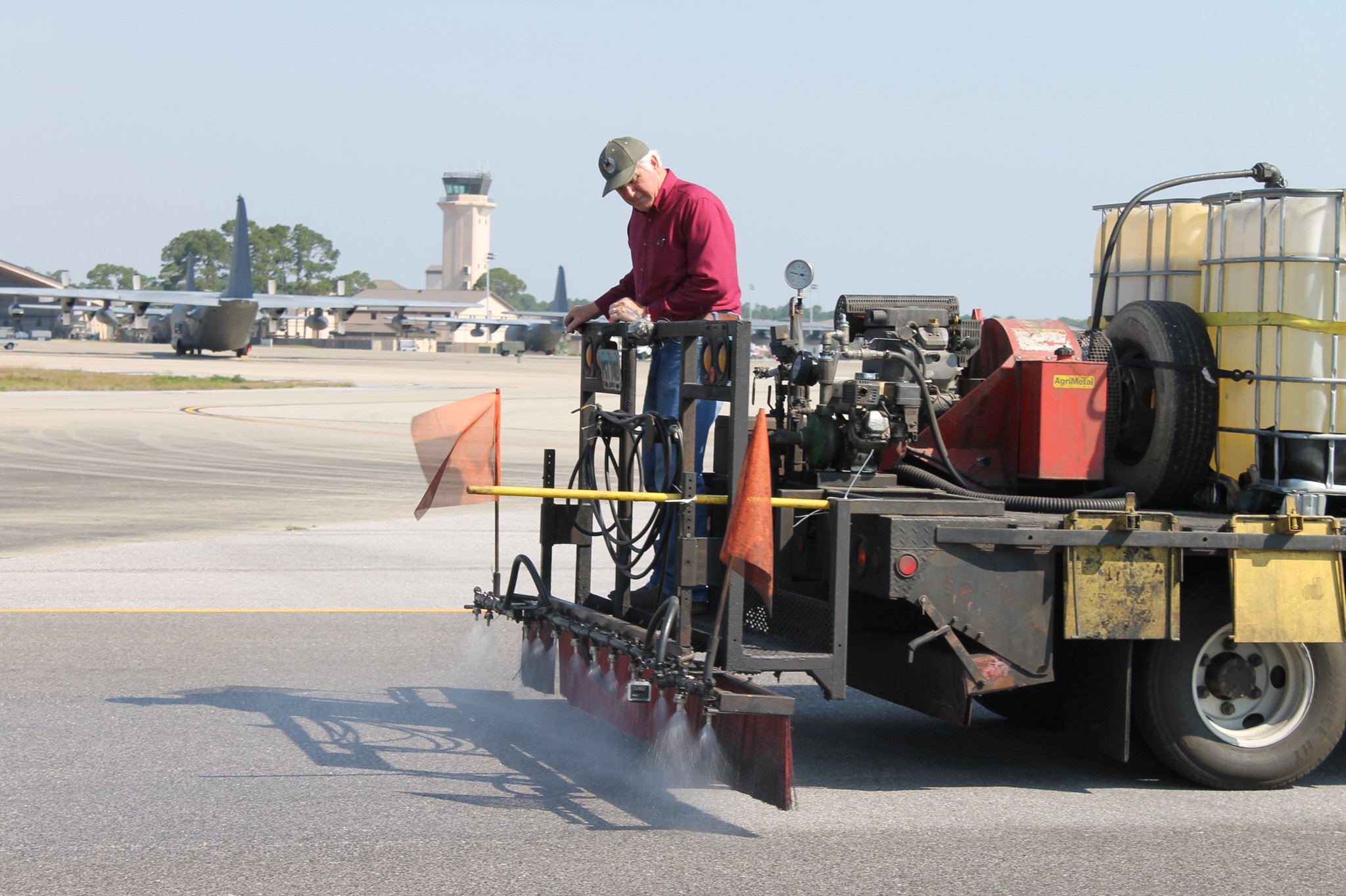
Automated road repairs, using 3D printing, could save money and vastly reduce disruption, and researchers are already showing it’s possible - Kristina Smith reports
It’s the middle of the night, and in the street below a team is busy carrying out repairs to the road surface. But there isn’t a human in sight.
A road repair drone has landed at the site of a crack and a 3D asphalt printer is now busy filling in that crack. A group of traffic cone drones have positioned themselves around the repair location to protect the repair drone and divert traffic around it.
This scenario may not be as futuristic as it seems. Researchers from Leeds University have already created a prototype of such a drone, while colleagues from University College London have managed to build the world’s first bitumen 3D printer. Both the drone and printer projects are part of a wider research programme called Self Repairing Cities.
“Our 2050 vision is to have zero-disruption road works,” said Richard Jackson, a research associate at UCL who developed the 3D bitumen printer. “It will be quieter, so we can do it at night and the goal is to have no human input at all.”
The 3D bitumen printer has already attracted the attention of several major road contractors. They are interested in a shorter-term solution using a semi-automated process, rather than a full-blown drone-delivered repair, says Jackson.
Jackson’s project has also produced another surprising result relating to the material properties of the printed bitumen. The process of extruding the bitumen through the nozzle of the printer seems to have changed the properties of the bitumen, when compared to the properties of exactly the same material which has just been heated up and cast.
Preventative maintenance
The concept of the road repair drone with its 3D printer is based on the idea of preventative maintenance. Road surfaces could be continually scanned – for example using devices attached to the underside of municipal vehicles such as refuse wagons – and any small cracks treated soon after identification.
Filling cracks early would prevent them worsening and hence extend the life of the road surface. Using drones, rather than crews of human repairers would make such a regime much more affordable, says Jackson. “The cost would be so much less,” he said.
Once cracks were identified, drones could be moved there using GPS, supplying exactly the right amount of repair mixture to each crack. There is more work to be done on how the crack would be prepared, said Jackson, as it would need to be cleaned out and some sort of agent applied to help form a good bond between the existing road surface material and the repair material.
“As scientists, we like to ask questions like ‘could we put a flame thrower on a drone?’,” said Jackson. “And after the asphalt has been printed, are we going to compact it, or will each function be carried out by a different drone?”
The 3D printer Jackson designed is a three-axis system with individual stepper motors that move the printed nozzle around. A six-axis system might be more useful, says Jackson, although it would also be a lot heavier.
The nozzle itself is made up of an auger screw, a stepper motor to drive the screw and a pellet hopper which fees in bitumen pellets. Heating resistors warm up the pellets and turn them from solid to liquid as they pass through the auger and out through a 2mm aperture.
Over the two-and-a-half years he has worked on the project so far, Jackson has tried various iterations of nozzle and auger screw design before finding the optimum combination. He also experimented with different temperatures and screw speeds, settling on between 125°C and 135°C at 1mm/second print speed and 4.4rpm.
Before using it to fill cracks – which the drone has done in a Leeds University car park – Jackson used the printer to create bars of bitumen for testing. In comparing the performance of these bars to cast ones, the unexpected difference in mechanical properties was revealed.
The cast bar showed different performance depending on which way up it was tested, whereas the printed one didn’t. The printed bar also showed up to nine times the ductility of the cast one, with similar fracture strengths.
The possible cause of the difference was revealed by closer observation of the form of the bitumen. The printed sample was found to contain a stretchy brown substance dotted throughout its cross-section which wasn’t seen in the cast one.
Jackson hypothesises that the brown, crack-bridging substance that seems to increase ductility is composed of a lighter saturated faction of the asphalt that has formed due to the way various sizes of particle move during the heating, screwing and extrusion process. “I have done some other work involving nanofibres and the printing process influences the fibres quite strangely too,” commented Jackson.
Concrete too
Though not part of the Self Repairing Cities project, researchers at Texas A& M University have also been experimenting with 3D printing to repair spall damage in concrete roads. This often occurs around induced cracks in concrete road surfaces, where lumps of concrete break off.
Researcher Jaeheum Yeon from the university’s Department of Engineering and Technology explains that he and colleagues Julian Kang from the Department of Construction Science and Wei Yan from the Department of Architecture were inspired to print concrete patches for the spall holes by technology used to repair teeth: “The use of laser scanners and 3D printers to treat cavities also has implications for engineers in concrete road maintenance,” said Yeon. “This method of treating cavities using 3D printers can be used to repair spall damage on concrete roads.”
The researchers used photogrammetry software,
The concrete patch was then glued into the hole using an epoxy resin adhesive. This also served to take up the gap created by shrinkage of the concrete, says Yeon.
To date, this technique has been used for two holes in the university’s car park. It will be important to prove the longevity of the technique before moving to trials on heavily-trafficked roads due to the potential risks to motorists if the patching fails, says Yeon.
The researchers also calculated what the economic benefits could be of this faster repair method, using the
Next steps
At UCL, Jackson is now working on printing asphalt mixes, rather than just the bitumen binder. Adding aggregates is problematic at the moment at this small scale, says Jackson, although a combination of sand and bitumen can be printed.
3D printing would allow the material to be varied over the depth of the crack, switching feedstock to apply a different material for the upper surface for example. Jackson is also adding nanomaterials, such as titanium dioxide nano particles.
This method will allow for printed materials to be tailored according to the location of the road and the local specifications. The nozzle and its operating parameters could be adjusted accordingly, said Jackson. “There is an argument for machine learning in the design,” he says. “We need a factory to make the 3D printing robots with different properties depending on the materials used in the road.”
Even in the shorter term, without total automation, 3D printing crack repairs could save money, says Jackson. And this is why contractors are interested in the technology.
A logistics app could organise and direct a small repair crew to crack locations, perhaps in an automated vehicle, optimising the work schedule, routes and timings. The crew would bring a ‘black box’ which would use computer vision technology to position its 3D printer over the crack and fill it accordingly.
“3D printing is going to change a lot of fields,” said Jackson who worked in nanotechnology and medical devices before he moved to this project, “and it definitely has the potential to change this one.”
New guidance from
Eurobitume, has published new technical and health,
safety and environmental guidance: an updated version of its Loading Compatibility Matrix and the first four of a series of Technical Information Sheets.
The Loading Compatibility Matrix is designed to ensure safe transportation of bitumen by road, rail and ship. The Matrix provides information on whether and how tanks should be cleaned between loads, depending on their previous and planned cargos. The latest version uses a red, amber and green coding system to make it easier to read. It is available to download in six languages.
Eurobitume has also produced the four new Technical Information Sheets containing advice and practical information for test methods for bitumen and bituminous binders. The four sheets cover the Bending Beam Rheometer (BBR); measuring the complex modulus, G*, and phase angle using a Dynamic Shear Rheometer (DSR); the Multiple Stress Creep and Recovery Test (MSCRT); and Pressure Ageing Vessel (PAV) tests.
Currently available in English, French and German, the sheets will be translated into other languages. Eurobitume plans to create more Technical Information Sheets covering other test methods.
Iterchimica raises RAP rate in Switzerland
Swiss road engineers are looking for ways to use higher proportions of RAP in their road pavements. Currently, there are huge amounts of waste road materials lying unused, with storage areas and landfill sites reaching their limit.
To solve this problem, engineers are investigating ways to use 100% RAP in the base and sub-base layers of the road. Current Swiss regulations allow 70% RAP in the foundation course, 30% in the base course and 10% in the wearing course. Among the technologies under consideration is Iterlene SCF2000 Green, a rejuvenator from additive specialist Iterchimica.
Iterchimica’s rejuvenator was used on the reconstruction of the Strada Cantonale in Lugano, a city in the Canton of Ticino in the south of Switzerland. The trial project involved milling to a depth of 170mm and then reconstructing the pavement with a 100% RAP base layer, 70mm of traditional binder course and 30mm of traditional wearing course over a 2m-wide lane.
To manufacture the base layer, the RAP was heated to between 140°C and 145°C and the Iterlene SCF2000 Green added at a dosage of 4.5% of the weight of oxidised bitumen. The mix was then transported to site in insulated trucks.
The laying and installation took place using traditional techniques and at outside temperatures below zero. Having been laid with a paver, the base layer was compared using a 20tonne rubber and iron combi-roller, followed by a 28tonne pneumatic-tyred roller and a 9tonne steel drum roller for finishing.
To validate the performance of Iterlene ACF 2000 Green, the rheology of the bitumen after the rejuvenator dose was analysed. According to Iterchimica, this showed that the bitumen had recovered its original physical-chemical properties. Tests also showed that the pavement’s performance with respect to rutting, fatigue and cracking were well within the specification for the road.
As well as monitoring this stretch of road, several other projects using 100% RAP have been carried out, with the aim of standardising the technology.












